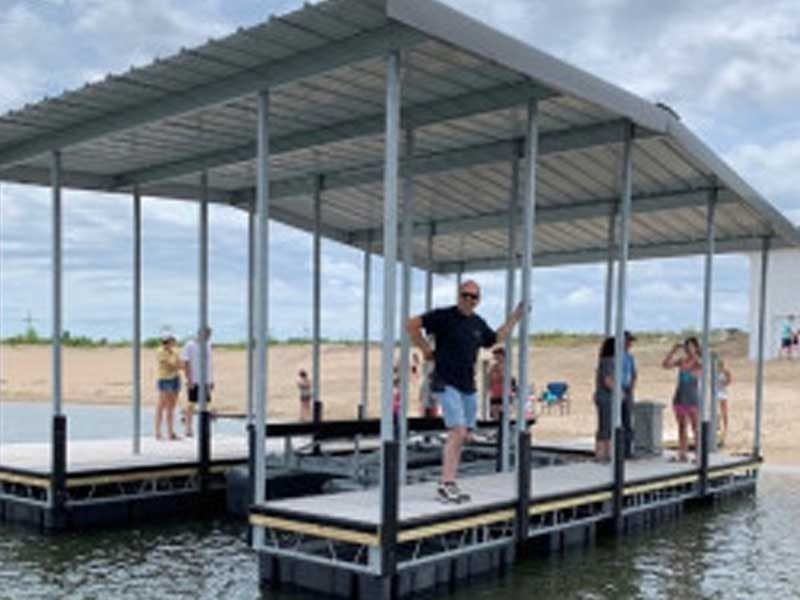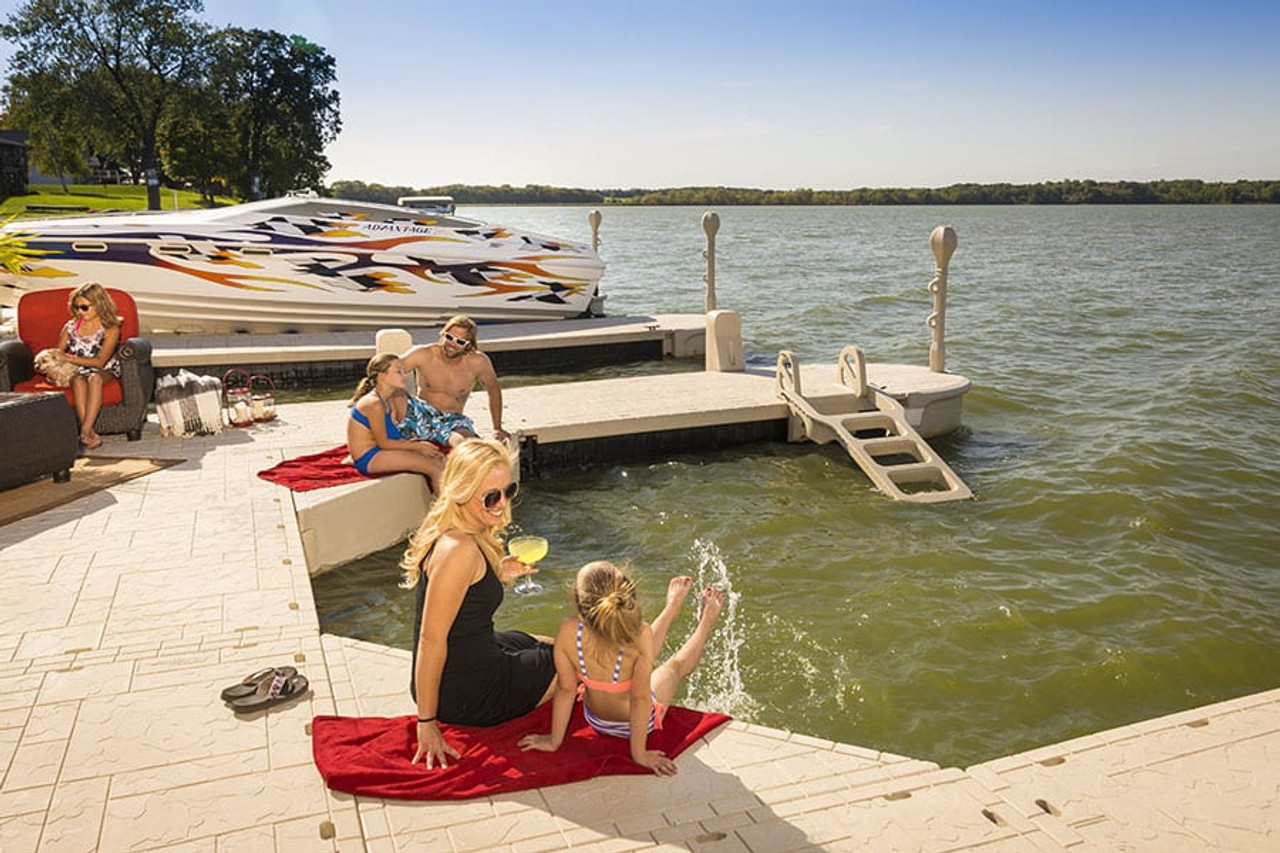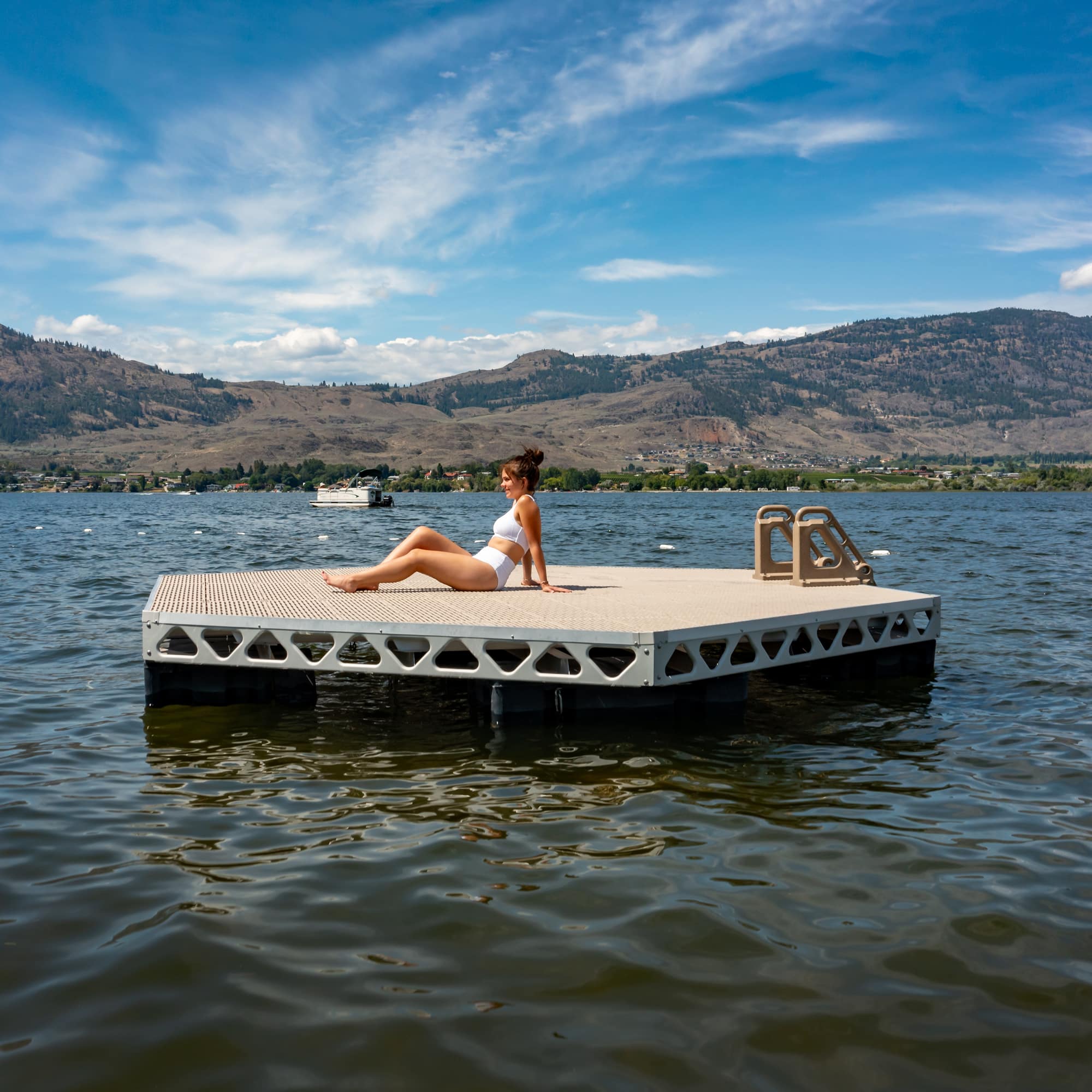Innovative Floating Docks: The Future of Beachfront Access and Recreation
Upgrade Your Waterside With Resilient Floating Docks
Updating your waterfront with resilient floating docks can significantly improve both capability and appearances, offering a flexible option for various water activities. With a variety of products readily available, including low-maintenance options and standard timber, picking the appropriate dock can complement your personal style and meet sensible needs.
Benefits of Floating Docks
Floating docks offer a wide range of benefits that enhance their allure for numerous maritime applications. Among the main benefits is their adaptability to changing water degrees - dock company. Unlike conventional fixed docks, floating docks surge and loss with the tide, guaranteeing consistent accessibility for watercrafts and boat regardless of environmental problems. This feature dramatically lowers the danger of damages to vessels, as they continue to be firmly tied even during changes in water depth.
Additionally, floating docks are less complicated to set up and relocate, providing adaptability for temporary or seasonal use. Their modular design enables customization to fit certain needs, whether for exclusive marinas, domestic beachfronts, or industrial applications.
Moreover, floating docks develop minimal disturbance to the water environment, protecting neighborhood communities and lowering the likelihood of erosion. They likewise give enhanced safety and security for customers, as their resilient nature offers a more forgiving surface than stiff frameworks.
In addition, floating docks can help with a diverse variety of tasks, such as angling, swimming, and entertainment boating, making them a valuable asset for waterfront development. Their adaptability and practicality make floating docks a preferred choice for a variety of maritime projects.
Choosing the Right Materials
Selecting suitable products for floating docks is crucial to their durability, efficiency, and general efficiency. When selecting materials, think about aspects such as ecological exposure, maintenance requirements, and structural honesty. Usual products consist of wood, plastic, aluminum, and composite options, each offering unique advantages and drawbacks.
Wood, while aesthetically pleasing, calls for routine maintenance to stop rot and decay. Pressure-treated timber can enhance resilience, but it might still catch water damage over time. Plastic drifts, often made from high-density polyethylene, are immune to corrosion and require marginal maintenance, making them an appealing choice for low-maintenance applications.
Light weight aluminum is one more viable alternative, understood for its strength and light-weight residential or commercial properties. It is immune to corrosion and can endure rough climate condition, although it might be much more expensive than various other materials. Composite materials incorporate the most effective characteristics of timber and plastic, providing a resistant and low-maintenance choice that simulates the look of wood without the linked disadvantages.
Ultimately, the option of product need to align with the meant use, environmental factors to consider, and budget restrictions, guaranteeing a useful and durable floating dock that meets your certain needs.
Setup Refine Overview
The effective installment of a floating dock depends on mindful planning and execution, making sure that it runs efficiently in its desired environment. The very first step entails evaluating site problems, consisting of water depth, coastline functions, and prevailing weather condition patterns, which will certainly notify the dock design and anchoring system.
Complying with the site evaluation, the next phase is to prepare the floating dock elements. This includes setting up the framework, securing floats, and affixing any kind of necessary hardware. It is vital to make certain that all links are robust and water-resistant to hold up against marine conditions.
Once the dock is put together, the setup process begins with positioning the More about the author dock in the water. This can include a crane or other lifting devices, particularly for larger structures. Appropriate positioning is vital for performance and security.

Maintenance Tips for Durability
Regular maintenance is essential for making certain the longevity and optimum performance of a drifting dock. To achieve this, begin with regular evaluations at the very least twice a year, concentrating on the integrity of the dock's structure, consisting of the flotation gadgets and attaching equipment. Search for signs of rust, wear, or damage, and deal with any kind of issues quickly to stop further damage.
Cleaning is another important aspect of maintenance. Eliminate particles, algae, and barnacles from the dock's surface area to avoid slippery conditions and preserve visual allure. Use a soft brush and a moderate detergent to avoid damaging the dock's products.
In addition, make certain that the dock is properly anchored and protected to stand up to seasonal modifications in water degrees and weather. Inspect the anchoring system for stability and make modifications as needed.
Enhancing Your Outside Visual
To produce an aesthetically enticing exterior room, including a drifting dock can substantially boost the total visual of your beachfront building. Floating docks are not just useful yet can additionally function as a striking focal factor that enhances the natural environments - floating dock builder. Available in various products and designs, these docks can be tailored to match your building's building style and landscape
The addition of decorative components, such as incorporated lighting or stylish barriers, additionally elevates the dock's visual allure. Take into consideration utilizing natural timber surfaces, which blend flawlessly with the atmosphere, or going with modern-day products like aluminum or composite decking that supply a smooth, contemporary appearance.
Strategically positioning planters or seating areas on or around the dock can create welcoming spaces that urge relaxation and satisfaction of beachfront views. Additionally, integrating colors and structures that harmonize with your landscape will certainly create a natural aesthetic throughout your exterior area.

Verdict

Upgrading your beachfront with resilient floating docks can significantly improve both capability and aesthetic appeals, giving a versatile remedy for different water tasks. Unlike standard set docks, floating docks surge and autumn with the trend, guaranteeing consistent ease of access for watercrafts and boat regardless of ecological conditions.Selecting appropriate products for floating docks is important to their long life, performance, and overall effectiveness.As soon as the dock is set up, the installment procedure commences with placing the dock in the water.In summary, floating docks deal numerous benefits, including flexibility to water degree modifications and a range of product alternatives.